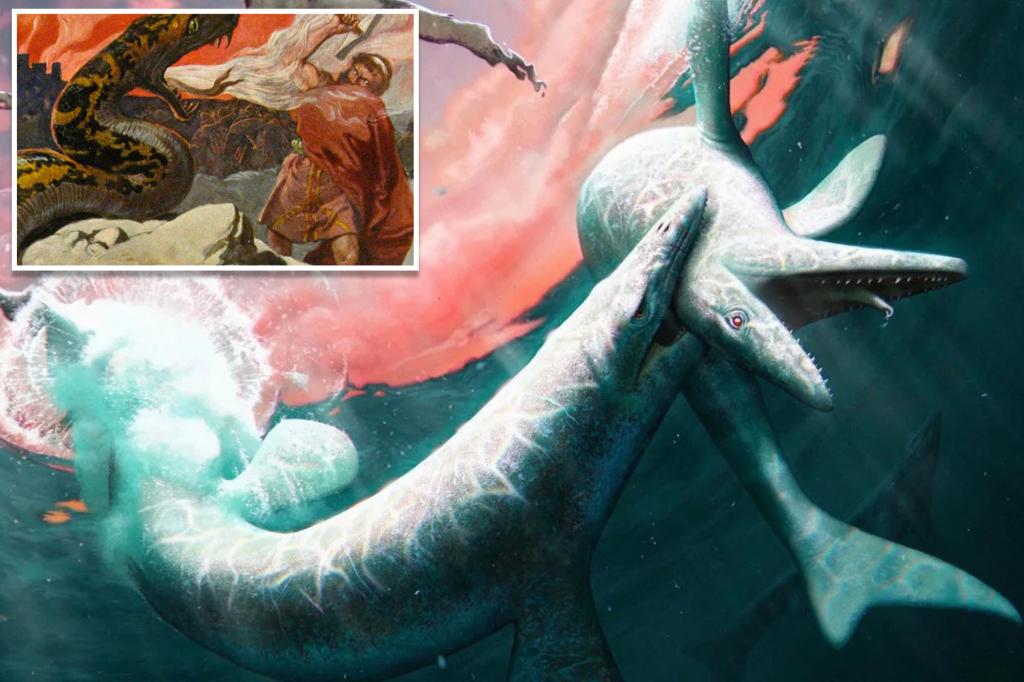Recent scientific discoveries claim that giant sea lizards with “angry eyebrows” roamed the waters of what has become North Dakota more than 80 million years ago.
The new species has been dubbed Jormungandr walhallaensis – a name derived from both the sea serpent in Norse mythology and the small Dakota town of Walhalla, near where the reptile’s fossils were found several years ago.
The newly discovered reptile is part of a species of mosasaur, a large sea lizard that lived when dinosaurs walked the earth, according to a study published last month in the Bulletin of the American Museum of Natural History.
“If you put fins on a Komodo dragon and make it really big, that’s basically what it looks like,” said study lead author Amelia Zietlow, who is a PhD student in comparative biology.
The study focused on fossils unearthed in 2015 during a dig in northeastern North Dakota where a nearly complete skull, jaw and cervical spine were all found, according to the American Museum of Natural History.
 Painting showing Thor Slaying the Dragon. North Dakota Heritage Center and State Museum
Painting showing Thor Slaying the Dragon. North Dakota Heritage Center and State Museum
The specimen was estimated to be 24 feet long, and had fins, a pair of “angry eyebrows” caused by bony ridges on the skull and a shark-like tail.
Estimated to have lived about 80 million years ago.
The new species includes features in two well-known mosasaurs, the study said. Smaller, more primitive mosasaurs called Clidastes and the much larger Mosasaurus, which could grow to about 50 feet long and lived around the same time as Tyrannosaurus rex.
 The study focused on fossils unearthed in 2015 during a dig in northeastern North Dakota where a nearly complete skull, jaw and cervical spine were all found, according to the American Museum of Natural History. Emil Doepler / Wikipedia
The study focused on fossils unearthed in 2015 during a dig in northeastern North Dakota where a nearly complete skull, jaw and cervical spine were all found, according to the American Museum of Natural History. Emil Doepler / Wikipedia
“When these animals evolved into these giant sea monsters, they were constantly making changes,” said Zietlow, of the Richard Gilder Graduate School of the American Museum of Natural History.
“This work brings us one step closer to understanding how all these different forms relate to each other.”
The first mosasaur was discovered more than 200 years ago before this latest study.
“These fossils come from a geologic time in the United States that we don’t understand,” said co-author Clint Boyd.
“The more we can fill in the geographic and temporal timeline, the better we can understand these creatures,” added Boyd, of the North Dakota Geological Survey.
Categories: Trending
Source: thtrangdai.edu.vn/en/



